UC Master Gardener Volunteers in Los Angeles County offer workshops and other events to help educate the public about the disease, its spread, and how to select and care for fruit trees. If you’d like to schedule a workshop or event in Los Angeles County, contact Master Gardener Program Coordinator Valerie Borel at vtborel@ucanr.edu.
Do you need advice about the pest, disease and tree care? Contact your Local UC Master Gardener Program for advice:
Los Angeles County: http://celosangeles.ucanr.edu/UC_Master_Gardener_Program/
Orange County: http://mgorange.ucanr.edu/
Riverside County: https://ucanr.edu/sites/RiversideMG/
San Bernardino County: http://mgsb.ucanr.edu/
Ventura County: https://ucanr.edu/sites/VCMG/

-

Infusing therapeutic material into citrus trees to treat HLB
The bacterium that causes huanglongbing (HLB), “Candidatus Liberibacter asiaticus” (CLas), enters a citrus tree either through grafts or when the Asian citrus psyllid (ACP) feeds. Once inside the tree, the bacterium travels through the...
-
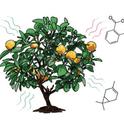
The ‘nose’ knows: Using citrus odor for early detection of HLB
Citrus trees emit volatile organic compounds (VOCs), or odors, that are the end products of plant metabolism. Researchers can measure the VOCs emitted by a plant and create an “odorprint”. Pathogens, such as the bacterium CLas that causes...
-
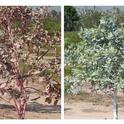
Using particle films to manage ACP
The particle films are applied to crops to manage environmental challenges like high heat or sunburn, or manage pests, such as aphids or psyllids. Particle films can reduce infestations because the particle films hide the natural plant colors that...
-
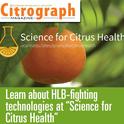
Science for Citrus Health featured in Citrograph!
The summer issue of Citrograph has just been released, and our outreach project has been featured. Written by Sara García-Figuera, the article discusses our approach for educating citrus stakeholders, researchers, media and the general public...
-
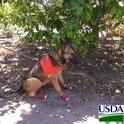
Canines can detect trees infected with the bacterium that causes huanglongbing
Canines have a highly sensitive scent detection capability that is significantly better (parts per trillion) than most laboratory instruments and they can be trained to “alert” (either sit or lay) when they detect specific ‘smells'...
-
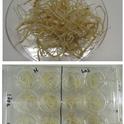
Culturing CLas to improve HLB management
Candidatus liberibacter asiaticus (CLas), the bacterium thought to cause huanglongbing (HLB), cannot be grown using traditional laboratory methods in petri dishes on agar and nutrients. The inability to culture the HLB bacterium, CLas, in the lab...
-

Developing HLB-tolerant citrus through breeding
All Citrus cultivars tested so far are susceptible to Huanglongbing (HLB), but they are not equally susceptible. Some are able to grow and produce a fairly normal crop, despite supporting high populations of the HLB-associated bacterial pathogen and...
-
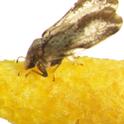
How does a better trap improve Huanglongbing management?
Attractants for insect pests of agricultural crops play an increasingly important role in management programs. Chemical, visual, and auditory cues that attract insects are identified during laboratory investigations and then verified for their...
-
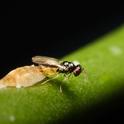
Biological control of Asian citrus psyllid in California
Research by Dr. Mark Hoddle, University of California, Riverside Dr. Mark Hoddle, a research scientist at the University of California at Riverside, is establishing the biological control agent, Tamarixia radiata, a parasitoid that attacks Asian...
-
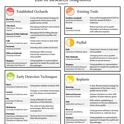
Research Snapshots Update
Since our last blog post, we have been busy writing up various new Research Snapshots covering a variety of projects aimed to help in the fight against Huanglongbing (HLB) the bacterial disease that is devastating US citrus and the Asian citrus psyllid...
For more information about existing and new tools being developed by researchers to protect citrus from damage from Huanglongbing disease visit the University of California's Science for Citrus Health website.
